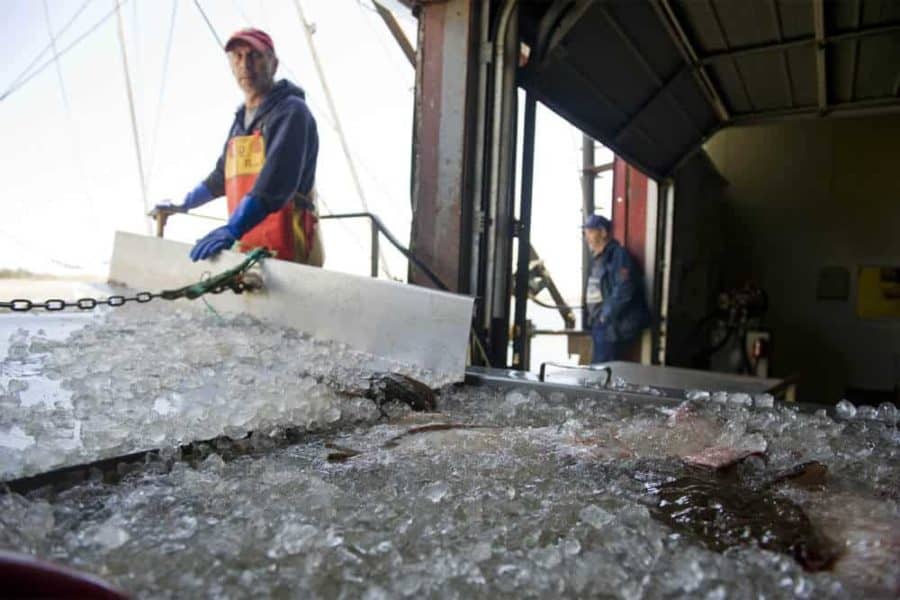New England is known for being an excellent source of lobster and other seafood. But while fishing is done locally, much of the processing is outsourced to other countries. A lack of local manpower means scallops caught off the coast of Massachusetts might travel to China or India for processing before they appear on your plate at a restaurant in Boston.
Northeastern professor Taskin Padir is hoping to change that. He was selected to lead a new project to bring collaborative robots developed at the university into processing plants at America’s busiest fishing port, located in New Bedford, Massachusetts. The goal, he said, is to increase production and efficiency, keep workers safe, and stimulate local job growth.
“We want to be able to process more fish locally so that we can generate more jobs and import less,” said Padir, an associate professor of electrical and computer engineering.
Padir envisions that the robots will first be tasked with testing the quality of fish. Workers now pick up fish and decide whether it meets food quality standards, feeling for just the right amount of squishiness. Padir’s lab at Northeastern has been developing algorithms for a robotic hand called Sawyer, which could be programmed to identify the ideal fish texture and softness with the goal of helping workers process more fish faster.
Padir visited several seafood processing plants in New Bedford to understand the challenges and opportunities within the industry and found that company owners were enthusiastic about bringing in robots.
“We welcome the idea of bringing automation to our processing plant,” said John Roberts, director of operations at channel fish processing. “It’s often difficult to find employees to work under the conditions we need to maintain in order to keep the fish fresh.”
Seafood processing plants are inherently harsh environments for humans, Padir said. The factories are kept cold to keep fish fresh. There’s often slushy water and ice coating the floors, making them slippery. And some of the tasks, such as cutting and portioning fish, are dangerous. These factors limit the number of people interested in working at processing plants.
Operations can also be unpredictable. For example, Padir said seafood companies often can’t recruit enough workers to handle the influx of orders they receive over the holidays.
Adding a system of robots to the existing processing line in seafood plants could double or even triple the production, Padir said. This would allow both small and large plants to reduce imports and complete more processing work locally.
The project, called Collaborative Robotics to Foster Innovation in Seafood Handling, or FISH, was selected to receive funding from Advanced Robotics for Manufacturing, a national consortium dedicated to improving the workforce with robotics. The project, said a representative from Advanced Robotics for Manufacturing, will begin when all agreements are in place.
Padir said that the robots and humans will work collaboratively, with robots performing much of the inspection and handling and humans completing the more complicated tasks, such as trimming left-over skin patches or bones. Eventually, he said, robots could be developed to handle dangerous duties such as cutting fish.
“It would be very hard for a robot to do the whole process from end-to-end,” Padir said. “But through meaningful collaboration, we can introduce robots and potentially double-up the volume of the seafood that will be processed. That means more revenue for the company and more jobs for U.S. workers.”
If our reporting has informed or inspired you, please consider making a donation. Every contribution, no matter the size, empowers us to continue delivering accurate, engaging, and trustworthy science and medical news. Independent journalism requires time, effort, and resources—your support ensures we can keep uncovering the stories that matter most to you.
Join us in making knowledge accessible and impactful. Thank you for standing with us!

